Hemadpant – Govind R. Dabholkar
Govind R. Dhabolkar, known as Annasaheb Dhabolkar or Hemadpant is most notably known for being the author of the beloved work, the Sai Satcharita. He lived in Bandra, Mumbai. He was a self-made man who studied only upto the fifth grade and passed the public service examination and went onto hold senior posts with the Government.
He was a Government servant until 1936 where he was a resident magistrate. Before retiring in 1916, he was lucky to have contact with Baba. He was a poet at heart and he began the most notable work in 1922 and completed it in 1926. It was Baba who called him Hemadpant, after a well known 13th century poet.
Meeting with Sai Baba:
Hemadpant was working in a place called, ‘Anand’ in Gujarat in 1910, when Kakasaheb Dixit wrote to him describing the leelas of Sai Baba. Hemadpant was very impressed and wanted to go for a darshan at the earliest. He applied for a 30 day leave, which was rejected by the commissioner. Hemadpant thought that getting transferred to Maharashtra might make it easier for him to visit Shirdi.
He did apply for the transfer, but it was refused on the grounds that he had already worked in Bandra, Mumbai. As per Government rules, he could not be posted there again. However, something unexpected happened. Suddenly, the Deputy Collector of Bandra passed away due to a heart attack. There was an urgent need to station a trustworthy and responsible person in Bandra. The same Commissioner who had earlier declined Hemadpant’s transfer, sent a telegram to summon him to Bandra.
When he was to go to meet Sai Baba in 1910, he boarded the wrong train. A Muslim acquaintance met him and asked him where he was headed and the gentleman corrected him saying the Manmad Mail did not stop at Dadar. He suggested, Hemadpant first go to Victoria Terminus and from there, board the Manmad Mail and there is sufficient time to get a ticket. It was that path he finally adopted. Had that incident not taken place, Hemadpant would have been disappointed and probably returned home in doubt.
He confesses himself, ‘Baba’s hand has been visible in moulding my fate from the beginning.’ During his first visit to Shirdi, he had a 30 minute discussion with Balasaheb Bhate, an old friend of his, on the question of whether a Guru is necessary or not. Dhabolkar was of the opinion that a Guru was unnecessary and that free will is required for everyone to adopt their own path.
But, Bhate contested him. Bhate said there is no free will at all and the only thing is destiny. On the question of a Guru, he said, “A Guru is absolutely essential.” After a heated 30 minutes, there was no result/ conclusion reached upon. Dhabolkar’s mind was restless. They then went to the Masjid and when they prostrated before Baba, Baba pointed to Dhabolkar and said, “What talk was going on there at the wada? And what did this Hemadpant say (pointing his chin to Dhabolkar)?’
Dhabolkar’s name was not Hemadpant. Hemadpant was a great genius, who in the medieval age wrote grand works and while in one way this was a compliment; in the other it was a reference to a mere literary skill. Anyhow Dhabolkar was impressed by the fact that Baba without being told of anything, knew that there was a discussion, and that he (Dhabolkar) had engaged in it with all his literary ability and dialectical skill. However, Baba’s influence did not stop with that.
Permission to write the Sai Satcharita:
Dhabolkar was not very proficient about saints. However, his destiny was to compel him to become a Sai bhakta. By constant association with devotees, he got wider and more correct ideas as to the functions of Gurus. He gradually resigned himself more and more to be dealt with by Baba. Baba dealt with him in a very remarkable way, and from the very beginning, made up his mind as to what should become of this Dhabolkar.
Dhabolkar had been gathering information and the leelas of Baba and being an able writer, with great command over Marathi verse and prose, wished to write out Baba’s leelas. This would be on the lines of Saraswati Gangadhar’s Guru Charitra and would give peace and happiness to those afflicted with sorrows. It would also impart knowledge and wisdom on temporal and spiritual matters. The leelas would be both interesting and instructive (like the Vedas) and if meditated on, they would bring about laya or union with Brahma.
So, he made up his mind that he should collect these stories and treat the publication as his upasana of his Guru. It would be especially valuable to those who could not see Baba. Baba’s teachings and expressions were the outcome of his boundless and natural self-realisation and Baba himself (so Dhabolkar thought), put this idea into his mind to collect and render them as Baba’s life or chronicles. Then, he wanted permission for the work.
Baba was moved and blessed Annasaheb by giving him udhi and placed his blessing hand upon Dabolkar’s head. He said, “Let him make a collection of stories and experiences, keeping notes and memos. I will help him. He is only an outward instrument. I should write myself my life, and satisfy the wishes of my devotees. He should get rid of his ego. Place (or surrender) it at my feet. He who acts like this in life, him I will help most. What of my life’s stories? I serve him in his house in all possible ways. When his ego is completely annihilated, and there is no trace left of it, I myself shall enter into him and shall myself write my life. Hearing my stories and teachings will create faith in devotees’ hearts, and they will easily get self-realization and bliss. But let there be no insistence on establishing one’s own view, and no attempt to refute others’ opinions of any sort”.
So said Baba. Then, Dhabolkar made the promise that he would surrender his ego. His intimacy with Dixit, Chandorkar and others enabled him to collect plenty of stories. This permission was given in 1916 and when Baba passed away, he had hardly written two or three chapters. Most of the work was written after 1918. He wrote 51 or 52 chapters and passed away in 1929.
Meanwhile, his chapters were published in Sai Leela Masik which was started under Dixit and his supervision. Gradually people began to read his work and were highly influenced thereby. The effect of writing was even more on the author himself. One such effect was the complete change of his outlook.
Hemadpant’s transition and acceptance:
When he was introduced to Baba, Chinchinikar told Baba that Dhabolkar had a large family and that Baba should bless him to get a new job after retirement. Baba said, “This cursed Government service he will get. But let him look to my service. That is most important’. And as Baba stated, Dhabolkar got employed again, though only for a short time, but the employment in Baba’s service was permanent and grew in intensity from month on month and year on year. His thoughts were upon Baba and his leelas, and the effect was that he was always Sai-minded.
His life and outlook were greatly altered. He felt he was under the protection of Baba and said, ‘The moment I touched Sai Baba’s feet, I began a new lease of life. I felt much obliged to those who took me to Baba, and I consider them my real relatives. I cannot repay their debt. I make mental namaskar to them. A peculiarity of Sai Baba’s darshan, as I find it, is that by his darshan, our thoughts are changed, the force of previous action (karma) is abated, and gradually non-attachment or dispassion towards worldly objects grows. It is by the merit of actions in many past births that such a darshan is obtained. And if only you see Sai Baba, really all the world assumes the form of Sai Baba’.
First, when he went to Baba, he just had superficial devotion. His nature was egoistic, combative and largely ambitious. From 1910-16, his progress was hardly noticeable. However, in 1917, a change occurred and that story is related in chapters 18 and 19 of the Sai Satcharita.
One day, as he was shampooing Baba’s legs, one Mr. Sathe had a problem and that was mentioned to Baba. Sathe was directed by Baba to read the Guru Charitra. and he did so for seven days. At the close of it, Baba appeared in a vision (dream) to him with Guru Charitra in his hand. Kaka Dixit came and asked Baba whether he would explain to Sathe what the appearance meant. He asked, ‘Is he to go on with a second saptaha of study of the Guru Charitra?” Baba said, ‘Yes’. Baba also said, ‘If the work be studied carefully, the devotee will become pure and will be benefited. The Lord will be pleased and will rescue him from samsara.’.
Hearing these words, Hemadpant thought, “For the last seven years (1910-17), I have been serving Baba and have never got a vision and this man (Sathe), after a week’s stay gets a vision. Like a chataka bird, I am waiting for Baba to pour His nectar on to me and bless me with His instructions’. This was just a thought. Baba read his thought at once and told him, ‘Go to Shama. Get from him Rs. 15 dakshina, stay and chat with him for a while, and then come back’. Accordingly, he went to Shama and asked for Rs. 15 dakshina: Shama was a very poor man and said, ‘I send my 15 namaskars’.
Then Hemadpant said, “I have been asked to chat with you and listen to you”, Shama then began to tell him stories of Baba’s leelas, and the foremost amongst them that he mentioned was that of Mrs. Radhabai Deshmukh. Shama said, “There was a lady, an old woman who came to Baba and was resolved to receive mantropadesh from Baba. She wanted to try satyagraha and began fasting. She said she will fast unto death at Shirdi unless Baba gave her upadesha. After three days, I interceded with Baba on her behalf and requested Baba to take pity on her.”
So, Baba sent for her and told her, “Mother, why are you subjecting yourself to unnecessary torture and impending death? You are my mother and I am your child. Pity me. I will tell you my story. If you listen to it, it will do you good. I had a Guru. He was a very great saint and most merciful. I served him very long indeed. Still he did not whisper any mantra into my ear. I was anxious never to leave him but to stay with him and serve him and receive some instruction from him. But he had his own method. He just got my head shaved and asked me for two pice as dakshina. I gave the same at once. “
“If you ask ‘how a perfect Guru could ask for dakshina and yet be called desireless,’ I explain to you that what he asked for was not coins. The first pice that he asked for was Nishta or firm faith and the second pice he wanted was Saburi or patience or perseverance. These two I gave him, and he was pleased. I served my Guru for 12 years. He brought me up. There was no lack of food or clothing. He was full of love. He was love incarnate. His love was indescribable. He loved me keenly. Rare is such a Guru. When I looked at him, I was filled with bliss, and he was in bliss.”
“Night and day I gazed at him without thinking of hunger and thirst. Without him, I felt restless. I had no other subject to meditate on. I had nothing but the Guru to attend to; He was my sole refuge. My mind was always fixed on him. That ‘fixture’ is the first pice – nishta. The second pice, saburi, is my waiting patiently and very long on my Guru and serving him. This saburi will take you across samsara. Saburi is manliness in man. It removes all sins and afflictions, gets rid of calamities in various ways, removes all fear and ultimately gives you success. Saburi is a mine of virtues and is the consort of good thought.”
“Nishta and Saburi go together. My Guru never expected anything else from me. But he never neglected me. He always protected me. I lived with him and sometimes away from him. Still I never felt the want or absence of his love. He always protected me by his glance as a tortoise feeds its young ones. Oh, mother, my Guru never taught me any mantra. How can I give you any? Do not try to get mantra or upadesha from anybody. Make me the sole object of your thought and actions, and you will undoubtedly attain Paramartha, the spiritual goal of life.”
“Look at me wholeheartedly, and I shall also do the same, that is, look at you wholeheartedly. Sitting in this Masjid, I speak the truth and nothing but the truth. No sadhanas and no proficiency in sastras is necessary. Have faith and confidence in your Guru. Believe fully that the Guru is the sole Actor or Doer. Blessed is he who knows the greatness of his Guru and thinks him to be Hari, Hara, and Brahma, ‘ Trimurti Incarnate’. Shama said, ‘The lady then accepted the advice’.
After hearing Shama, Annasaheb went to the Masjid and there he sat next to Baba. When the aarti was going on, Baba asked him whether he went to Shama and asked for dakshina and had a chat? Annasaheb said, “Shama sent his 15 namaskars. In the chat, he gave an account of Mrs. Radhabai Deshmukh’s incident’. Baba asked, ‘What is it?’ Dhabolkar narrated the whole story. Then Baba said, ‘Wonderful is the story. Did the story strike you, and did you catch its significance?’ Annasaheb said, ‘Yes. The restlessness of my mind has vanished. I have got true peace and come to know the true path’.
Then Baba said, “My method is quite unique. Remember well this one story, and it will be very useful. To get knowledge (realisation) of the self, dhyana (meditation) is necessary. If you practise it continuously, the vrittis (thoughts) will be pacified. Being quite desireless, you should meditate on the Lord who is in all the creatures, and when the mind is concentrated, the goal will be achieved. Meditate always on my formless nature, which is Knowledge Incarnate, Consciousness and Bliss. If you cannot do this, meditate on my form from top to toe as you see here night and day. As you go on doing this, your vrittis will be one-pointed and the distinction between the dhyata (meditator), dhyana (act of meditation) dhyeya (thing meditated upon) will be lost, and the meditator will be one with the consciousness and be merged in Brahman.
The mother tortoise is on one bank of the river and her young ones are on the other side. She gives neither milk nor warmth to them. The mere glance gives them nutrition. The young ones do nothing but remember (meditate upon) their mother. The tortoise glance is, to the young ones, a downpour of nectar, the only source of sustenance and happiness. Similar is the relation between the Guru and disciples.” Baba gave him sugarcandy and said, “If you take this story to heart, remember it well, your state will be equally sweet. Your desires will be fulfilled and you will be happy. Meditate on the story; assimilate its spirit; then you will always remember and meditate on the Lord who will manifest himself to you.”
Temporal benefits and service to Baba:
Hemadpant was lucky enough to get a Government job for a short while and thereafter, following Baba’s advice only served Him. So, he helped greatly in the management of Sai Baba’s Sansthan, after 1918 or 1920-21. He looked after the accounts and helped greatly in the publication of Sai Leela Masik also. But his most important service was the writing of the first 51 or 52 chapters of the Sai Satcharitra. After his death in 1929, the 53rd chapter was added on and the complete book was published.
So, the effect of the study of Baba’s leelas is the great service Hemadpant renders. Baba himself said that a study of his leelas would put an end to ignorance and ferry people across samsara. It would make them get laya (absorption) in Sai by constantly remembering his leelas, words, and nature, especially his nature as sarvantaryami. Baba, as he himself declared, is the soul of all souls. Everything is his form. By constant meditation on Baba’s leelas, one can get an experience of Baba in all forms.
Baba agreed to look after the temporal welfare as well as the spiritual welfare of Dhabolkar. The reality of this protection and guarding influence was not only in his case but also in that of his relatives.Having found Baba a precious gem or mine, he took with him to Baba his two sons-in-law, one after another (R. R. Samant and Galwankar) as also the rest of his family. Baba looked after their interests as well as can be seen in Devotees’ Experiences of Sai Baba.
Galwankar’s statement is especially interesting. He stated in 1938 when he was still employed, Baba fixed him birth after birth on a high moral and spiritual level and integrity. Once Baba appeared to Galwankar and asked him, “What do you want?” Galwankar wanted nothing but Baba’s grace and he got it. He used to get sudden spells of bliss of Baba. In the midst of his official work he would suddenly stop and for some moments he would enjoy the bliss of Baba, He was appointed as trustee of Sai Sansthan, an office which he held up to his death in 1945.
The Pothi:
Hemadpant actually started writing ‘The Pothi’ in 1922 and it was published in 1929 after Hemadpant passed away. This is a composition of 9308 verses in Marathi in Ovi Meter, on the life and teachings of Saibaba on the lines of Eknath’s Bhagwat. It is usually sung rather than read. This Pothi should be in every house, and should be lovingly and respectfully read.
Baba will be pleased by removing ignorance and poverty, and will give knowledge, wealth and prosperity. With a concentrated mind if one reads at least a chapter daily, it will give unbounded happiness. This work should be read at home specifically on “Gurupurnima” and on other holy days. If you study this one book all your desires will be satisfied and Sai will easily make you cross this “Bhava Sagara”. The sick will get health, the poor will get wealth and the mind will get steadiness (Refer Sai Satcharitra Phala Stuti, Epilogue).
On 26th November 1930, the first edition of “Shri Sai Satcharitra” was published in Marathi by Shri Saibaba Sansthan Trust (Shirdi) and had approximately 900 pages in size 8’x5.5′ and was priced at Rs.3/- only. Later this holy pothi got translated into English, Telugu, Tamil, Gujarati, Sindhi, Bengali, Kannada, Oria, Nepali, Punjabi and Konkani.
Shimga Dinner Photo:
Early in the morning of a full moon day of the Holi festival in 1917, Hemadpant had a vision. Sai Baba appeared to him in his dream in the form of a Saint and told him that he would come to his house for meals that day. When he woke up he did not see Sai Baba or any Saint. Though Hemadpant was in contact with Baba for the past 7 years and though he always meditated on Baba, he never experienced that Baba would come to his house for meals. However, he went to his wife Mrs. Rukumabai and informed her that being the festival of Holi, a saint guest was coming for a meal and that some more rice should be prepared.
She doubtingly asked whether it was possible that Baba should come to Bandra from Shirdi, leaving the delicious food served to Him in Shirdi for accepting their ordinary meals. Hemadpant then assured her that Baba might not come in person but He might attend in the form of a guest and that they would lose nothing by cooking some extra rice. After this, preparation for the lunch went on and it was ready by the afternoon.
The worship was done and the dishes were arranged with “Rangoli” marks around them. Two rows were put up with a central seat reserved for the guest. The entire family assembled and occupied their seats and the serving of various dishes commenced. While this was being done, everybody was watching for the guest, but none turned up though it was past noon. The door was then closed and ghee was served. Formal offering of the Naivedyam to Lord Krishna was also done. But, as they were about to begin, foot-steps in the staircase were distinctly heard.
Hemadpant went immediately and opened the door and saw two men Ali Mohammed and Moulana Isnu Mujavar. These two people, seeing that meals were ready and all the members were about to begin eating, apologized to Hemadpant and requested him to excuse their interference. They said, “You left your seat and came running to us, others are waiting for you. Hence, please take this thing and we shall relate all the wonderful tales about it later on at your convenience.” So saying they took out a packet wrapped in an old newspaper cover and placed it on the table. Hemadpant uncovered the packet and saw, to his great wonder and surprise, a big nice picture of Sai Baba.
Seeing it, Hemadpant was much moved, tears rolled down from his eyes, he bent and placed his head on the feet of Baba in the picture. He felt blessed by Baba. Out of curiosity he asked Ali Mohammed where he got this picture. He said that he bought it from a shop and that he would give all the details about it later on and wished that as all the members were waiting for him, he should go and join them for food. Hemadpant thanked him, bade them good-bye and returned to the dining hall. The picture was placed on the central seat reserved for the guest. After offering Naivedyam to the photograph of Sai Baba, the whole family commenced eating food.
The story of how this photograph of Baba reached Hemadpant’s Sai Niwas is very interesting: Long time back, a Saint by name Abdul Rehman gave a lifesize framed photo of Sai Baba to Ali Mohammed. After sometime, Ali’s brother-in-law fell sick. Someone suggested that if the photos of Saints were put in the sea, the illness would subside. Hence, Ali asked his manager to collect all such photographs from his/relative’s house and immerse them in the sea. After some days Ali Mohammed came home and was surprised to find that Baba’s photograph was still on the wall. He began to think to whom it should be given and then as per Baba’s order given to him through his thoughts, the photo was handed over to Hemadpant.
This beautiful photograph that was brought by Ali Mohammed and Moulana Isnu Mujawar was set in the place that was reserved for Baba at the “Simga Dinner” (Refer Sai Satcharitra Chapter 40). Baba kept his promise to attend the Dinner in the dream of Dhabolkar and arrived in this form. At Shirdi, the same day and at the same time Sai Baba told Shama that he had a sumptuous meal at Bandra in Hemadpant’s house. Shama could understand Baba’s words only after sometime when Hemadpant came to Shirdi to meet Baba.
Life lessons to be learned from Hemadpant:
-
Surrender your ego to your Guru. Once you do that, you will merge in your Guru.
Dr Vinny Chitluri pays tribute to one of Baba’s Mahabhaktas, Govind R Dabholkar, whom Baba named Hemadpant. Vinnyji talks about how Dabholkar came from a poor family, how he got a job in the government, how he came to Shirdi to meet Sai Baba, and there he witnessed the Leela of Baba grinding wheat.
He was inspired to chronicle whatever he witnessed and Baba, at this point, named him Hemadpant and thus with Baba’s blessings and permission, he started writing the sacred book Sai Satcharita, greatly treasured and revered by all Baba’s devotees.
Dr. Vinny emphasises how this task changed Hemadpant as a person. Vinny Ma also gives us details about the original Satcharita written in poem form in Marathi, and how translated and editions versions have not been able to do justice to Baba’s words that He uttered. She hopes one day, someone will accurately translate Baba’s words from Marathi to other languages and bring out the essence of what He spoke.

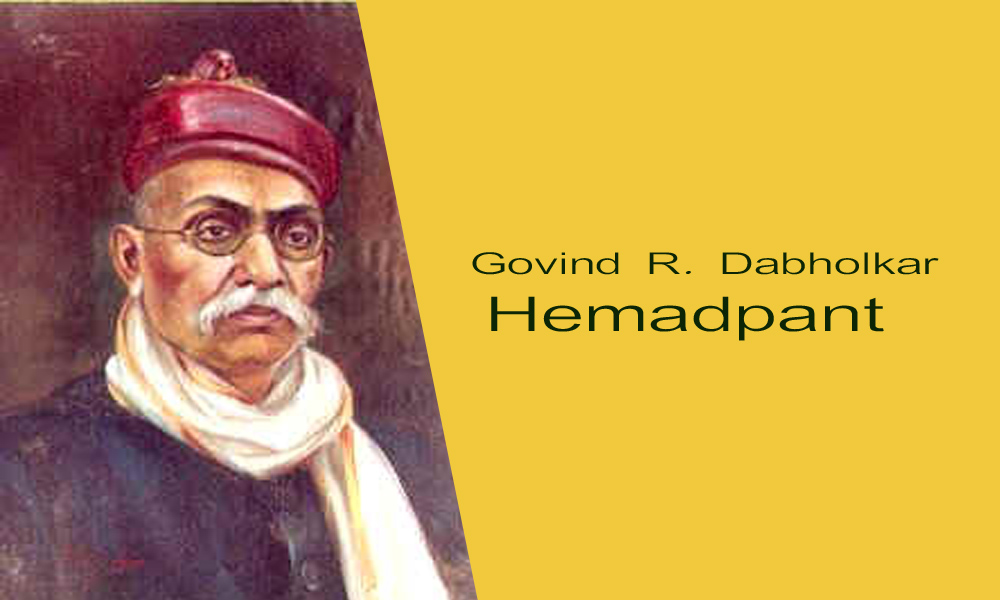
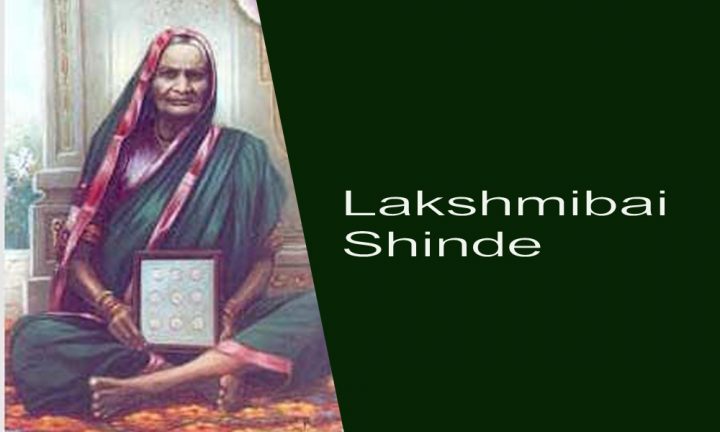
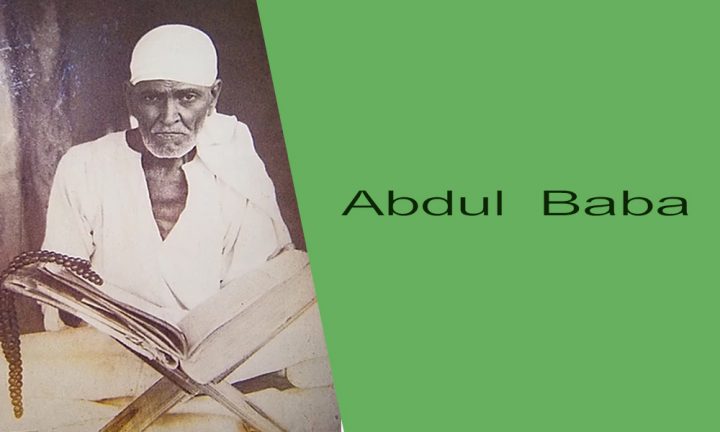
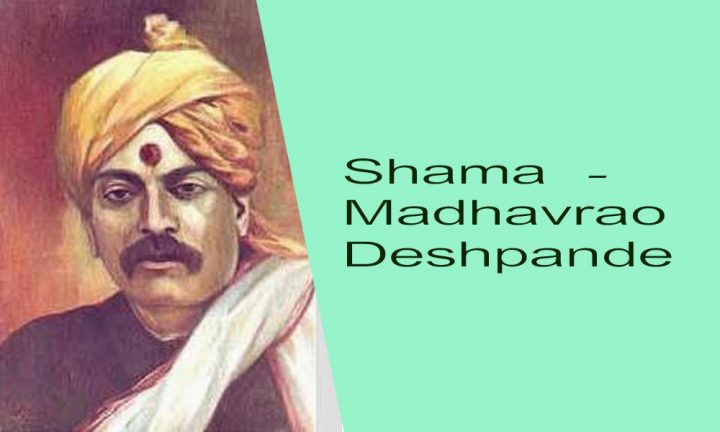
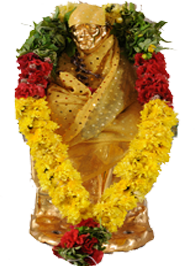
 Donate Now
Donate Now  Online Services
Online Services

Find us on Social Media